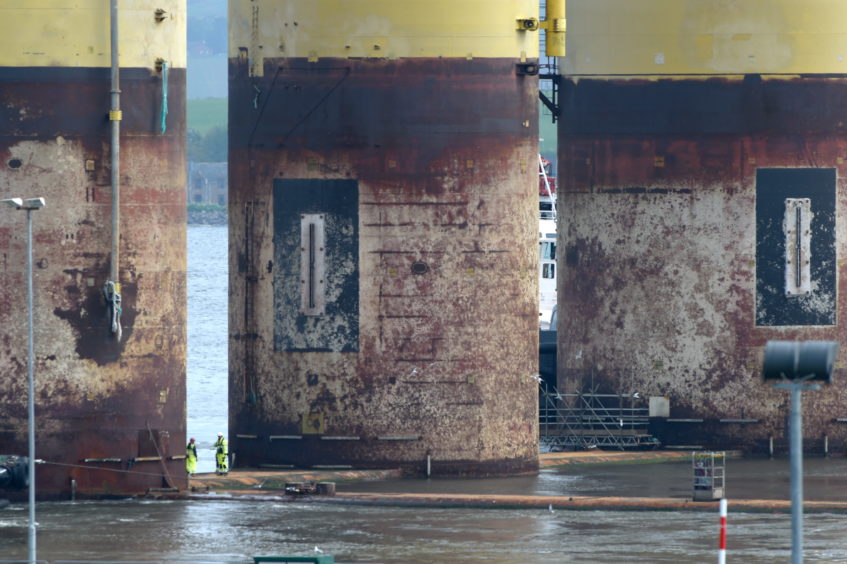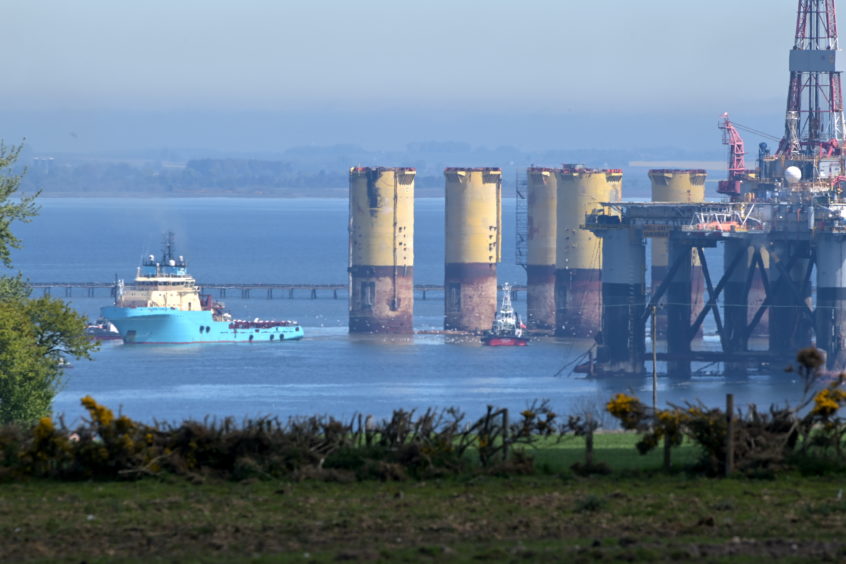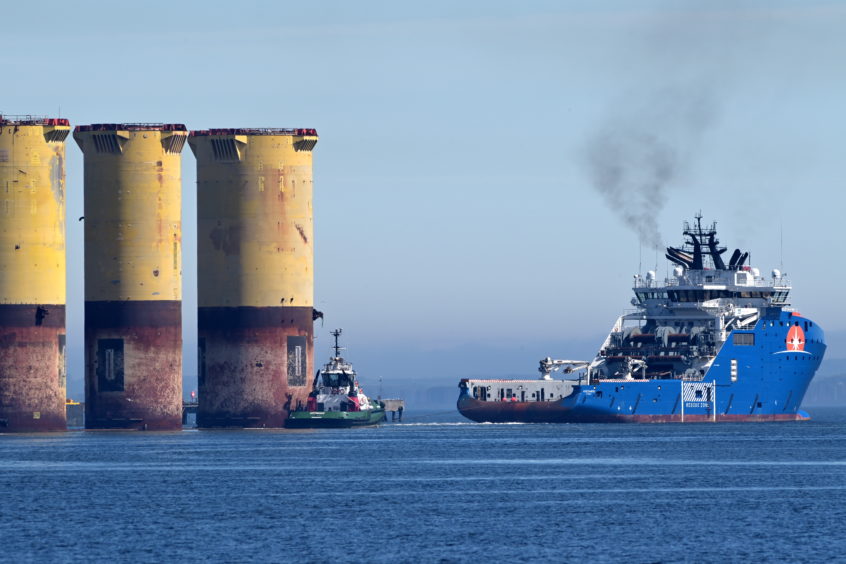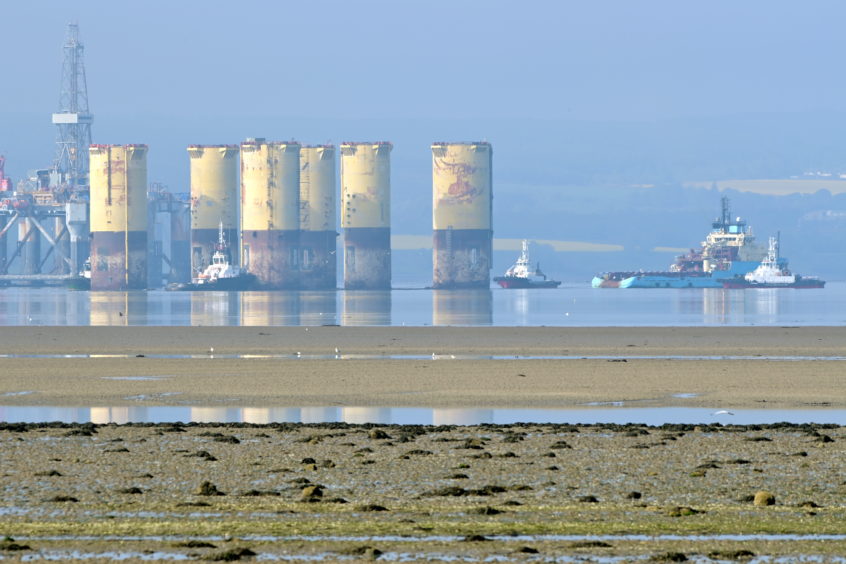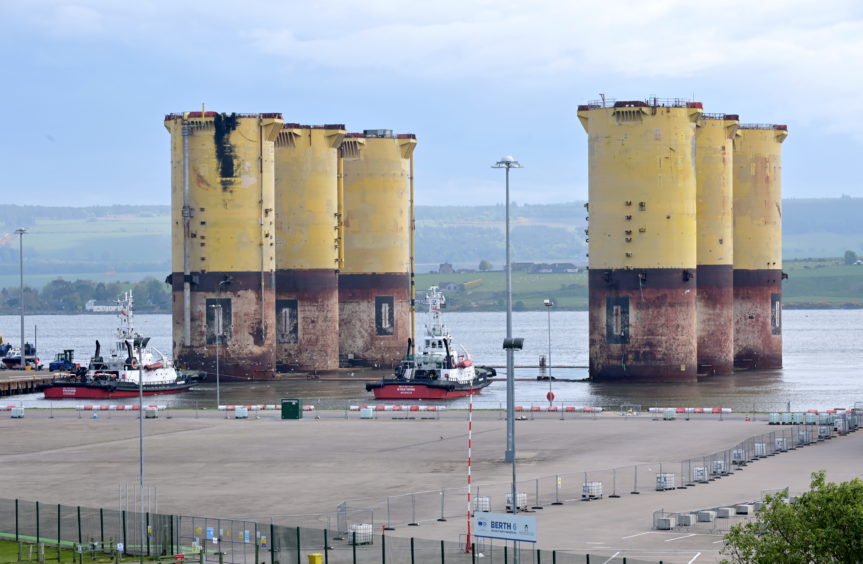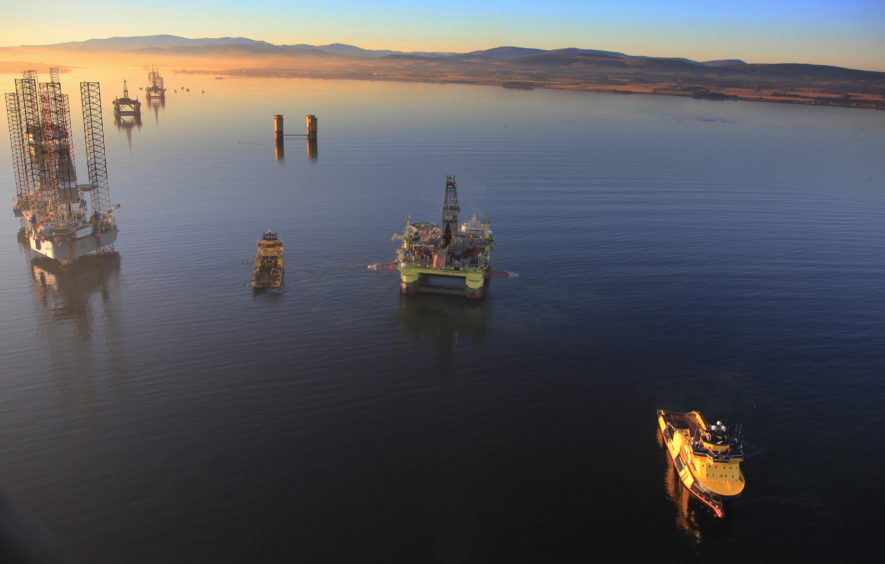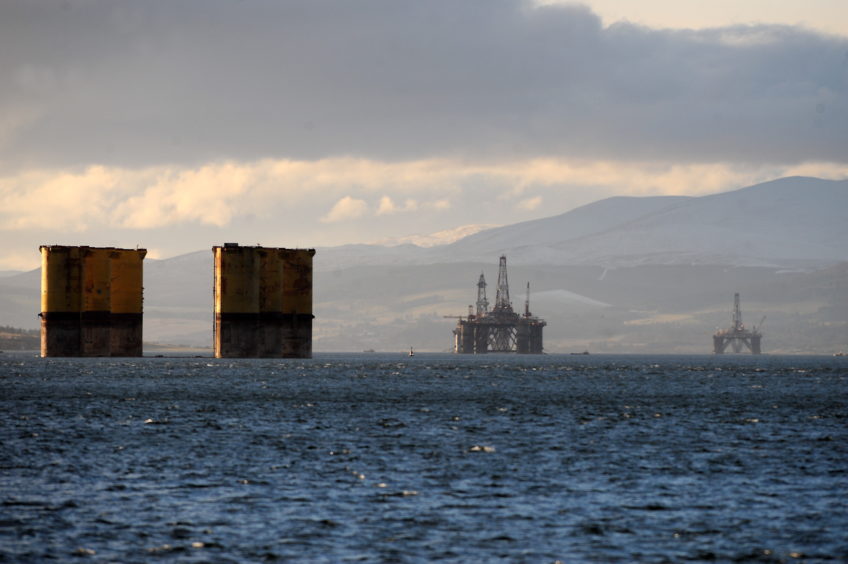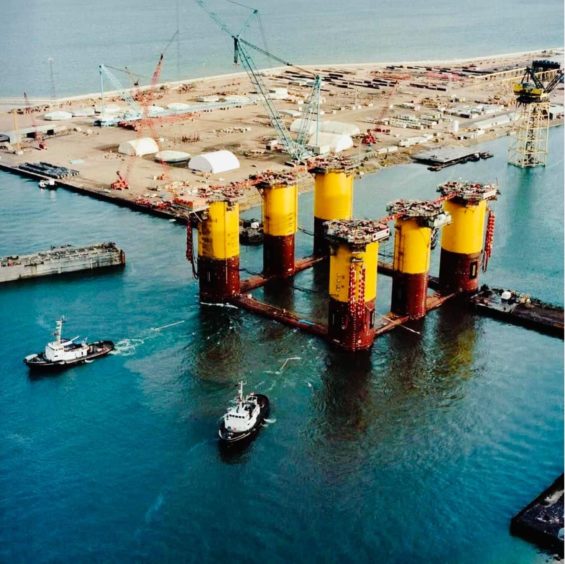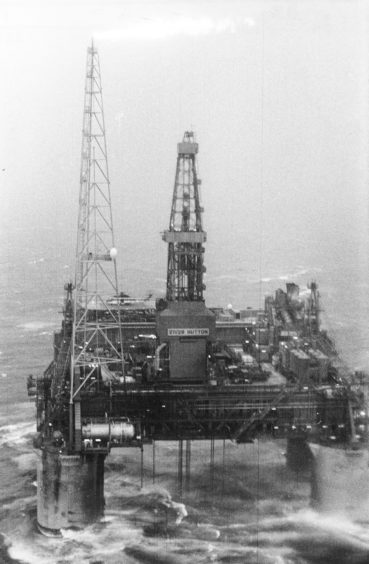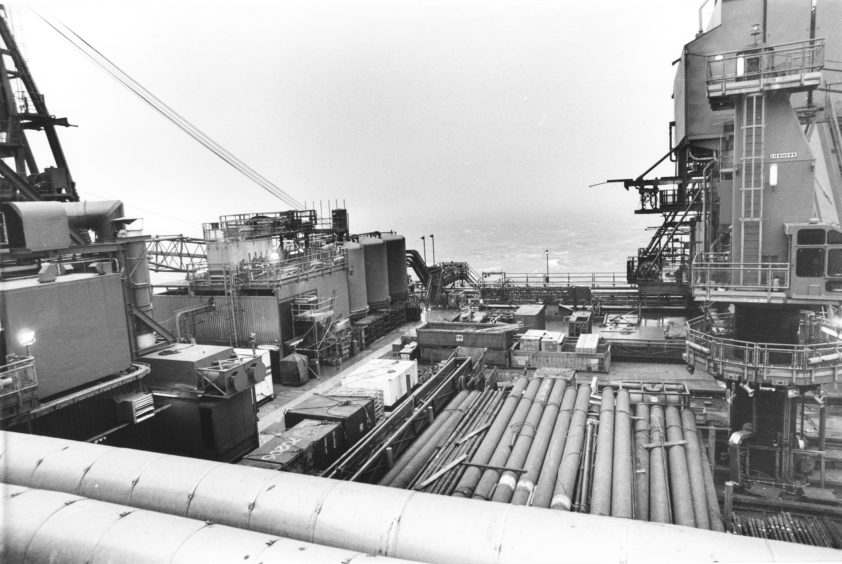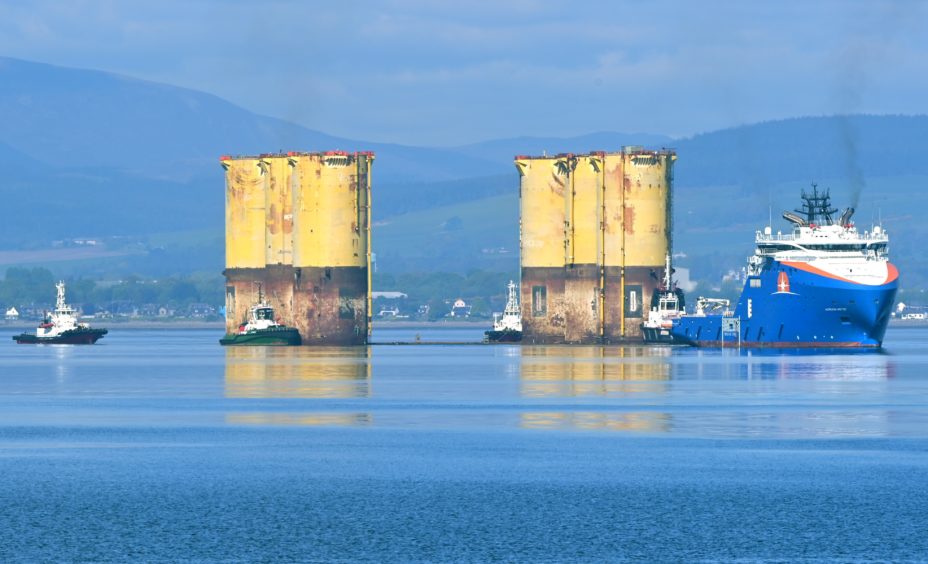
A 20,000-tonne “eyesore” on the Cromarty Firth of more than 12 years is finally being removed as the huge Hutton platform legs are being taken to shore.
The Hutton structure, a hull and six legs, was parked in the body of water in 2009 as its journey to Spain for refurbishment fell through.
Now, Messiah Decommissioning has acquired the remains and a major operation has been completed this weekend to bring the structure to shore for dismantling.
The Hutton hull – known as the tension leg platform (TLP) – is planned to be broken down at the Queen’s Dock at the Port of Cromarty Firth, a stone’s throw from Nigg where it was constructed by Highland Fabrication in 1984.
Tony O’ Sullivan, chief executive of Messiah Decom, said: “It’s a massive achievement for Messiah to step into major contracting for offshore structures. And it is a great achievement to clear an eyesore that’s been on the Cromarty Firth for 12 years.”
Timelapse video submitted by Aimee Harper.
Messiah and its partner, freight specialist Nerida, have won the confidence of the Scottish Environmental Protection Agency (SEPA), the Oil and Gas Authority (OGA) and Port of Cromarty Firth, who have all backed them to complete the dismantling job, expected to last 12 months.
Bob Buskie, CEO of the Port of Cromarty Firth, said it was a “memorable time” as the “Pillars of the Cromarty Firth” get an end to their story.
“Since 2009 the legs have been safely and securely anchored here, becoming a distinctive part of the Cromarty Firth” he said.
“Now its life has come full circle as it will be transferred to the Port’s Queens Dock where Messiah Decommissioning can begin decom operations onsite. The Port continues to hold all the relevant decommissioning and waste management licences to ensure the project is completed to the highest and safest standard by Messiah.
“Above all, we are proud that the Hutton’s materials will then be recycled and reused, so they are going back into the value chain, something that is very much part of our Circular Economy principles.”
Messiah Decom, founded in 2003, has a record of dismantling platforms around the world, including work on projects such as the Yme, Jotun B and Huldra installations.
Around 10 workers, with four people to be employed locally, are being deployed for the dismantling work. The metal will then to be sold and shipped out for a profit.
John Townley, managing director at Nerida, said it is “so fitting” that the TLP ends its life at Cromarty.
“We are delighted to have cleared all the regulatory hurdles and to move ahead with the move and the dismantling of the structure.
“Queen’s Dock was the natural choice because of its outstanding facilities and experience in this field. One of our key priorities was to ensure the jobs created from this process would remain in the UK.”
Long story
While the Hutton legs were constructed at Nigg, the platform topsides were built close by at Ardersier, with the two being “married” in the Cromarty Firth.
The platform, not to be confused with the North West Hutton, was sent out to its namesake field east of Shetland in 1984.
In 2002 as the field was in decommissioning phase, the topsides were sold and sent to Murmansk in Russia for dismantling.
A deal was then made for the hull and legs to be refurbished at a shipyard all the way down in Cadiz, for eventual reuse in the Gulf of Mexico.
However, on its long journey from Russia to Spain, the deal collapsed, leading to the TLP being parked in the Cromarty Firth.
The asset changed hands several times, from operator Kerr-McGee to Monitor TLP in 2002 for £19million.
Messiah Decom acquired the asset from Curacao-registered Redwater N.V, which has been reported as owner since 2009.
“We just gave them an offer they couldn’t refuse”, Mr O’ Sullivan said.
“I knew it could be bought, so I contacted them, made them an offer, they accepted it and I bought it. That’s the long and short of it.
“SEPA is absolutely over the moon that it is finally being moved out.”
A spokeswoman from SEPA confirmed that all the necessary authorisations are in place for work to begin and that it will continue to liasise with the Port and Messiah Decommissioning.
She said: “Environmental protection, human health and sustainable resource use are cornerstones of oil and gas decommissioning and Scotland is recognised worldwide for its responsible approach, high quality infrastructure and technical skills and experience.
Bill Cattanach, head of supply chain at the OGA, said: “It’s great to see the remnants of the Hutton TLP are to be disposed of, and also to see the first significant decommissioning project at the Cromarty Firth port.”

